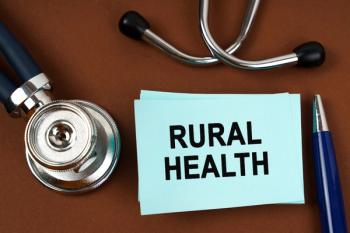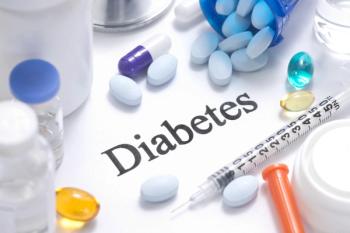
What you need to know about liability insurance
COVID has brought a host of new practice liability threats. Is your practice protected?
COVID has created untold stress on many practices, both from a financial standpoint and having to find ways to safely see and care for patients. The pandemic has also brought with it many risks, including some that doctors may not even be aware of.
Medical Economics spoke with Pete Reilly, North American health care co-practice leader,
(Editor’s note: The transcript has been edited for brevity and clarity.)
Medical Economics: With practices hurting financially because of COVID, many are looking to cut expenses and insurance is often at the top of the list. Is that a bad idea?
Pete Reilly: To be blunt, the answer is yes. COVID has certainly had significant impacts on practices across the country. Across every area of specialization, the issues of risk remain, and they have not gone away. Insurance is there to protect the balance sheet, and in many instances, the personal assets of the providers. To lessen that, even in the age of COVID, maybe for short-term money per se, it is not a good idea to waive that protection for the practice, the individual, and quite frankly, their patients.
Medical Economics: Are there ways a practice can reduce its insurance bill without forgoing coverage?
Reilly: There are, and while there are some tools that I think are not as attractive as others, I think what is important, and that we would advise practices is to take a look at their exposure basis. And by that we mean the number of patients that they're seeing, the patient count, patient visits, their revenue, and have your insurance company look at the exposure basis for the particular line of coverage where you're looking to save money and have it adjusted appropriately. I think I can speak for Glenn when I say HUB has been really quite successful in advising our clients to do that, and helping them capture the lower risk exposure and have that properly reflected in their insurance premiums. That's a much more, I think, intelligent way to go about it while maintaining the protection that they have paid for.
Medical Economics: The pandemic also brought telehealth into the mainstream. Are there any risks physicians may have overlooked on either the malpractice side or the technology side?
Reilly: Sadly, absolutely. Telehealth is a game changing tool for health care again across nearly every specialty. And while the technology piece, I think everyone understands its importance, telehealth really brings into play several different aspects of risk. The malpractice remains vital, you are still treating a patient and from a law they still treat it primarily justice the same as if they were in your examination room, you do run into questions of potentially licensing, working across state lines depending on where your patient may actually be sitting at the time of an interaction. And in other states where you have patient compensation funds. Those requirements may not be waived, depending on again where the provider is sitting and where the patient is sitting. Those two issues alone are often overlooked. Licensing becomes vital and has to be reviewed with an appropriate attorney or licensing authority. And then lastly, making sure that your contracts and how you are either being indemnified or what expectations you have with a telehealth provider and the technology platform—that should be reviewed and discussed to ensure that the practice does not have an unintended exposure.
Medical Economics: The number of cybersecurity attacks on health care facilities has been on the rise during the pandemic. Has this affected cyber security insurance cost or coverage, and is cybersecurity insurance something the average medical practice should have.
Glenn Day: Let's start with the last first and the answer is absolutely. Cyber liability policies are an essential element for all medical providers, especially doctors’ offices. And the good news is at that level, when you're talking about a practice group of 20 doctors or less, they're not doing a lot of heavy underwriting on that policy. It's basically using the law of large numbers: if we insure thousands of medical practices and charge them a few thousand for $1 million in coverage, that's the way they look at it, as opposed to intensely digging into the policies and procedures of that practice. So yes, it's affordable.
Why is it essential? Even a very, very small medical practice collects at least hundreds if not thousands of patient records over the course of a practice period. They hold the most valuable asset on the black market for people that are hacking systems; anything medical that would include a medical record or a Medicare number is highly valuable on the marketplace. They have a very valuable asset that they need to protect. They can be sort of a soft target if you think about it, because a small doctor's office doesn't have the ability to hire a cybersecurity expert, or even may not contract with a cybersecurity expert, whichever is the option that's most affordable for them. But the key for me is, I don't see doctor's office having a lot of personnel standing around waiting to deal with a breach. So when you buy a cyber liability policy, virtually every one of them provides you a suite of services. There will be people that can come in and analyze your system and see what was breached and then they can handle notification for you. And they can handle your legal protection of lawsuits, and that is just simply provided by calling an 800 number. I'd say it's an essential part of their coverage.
Medical Economics: COVID has also brought a new level risk into the workplace, especially for a medical practice, has this affected worker's compensation costs at all?
Day: I'll do that with my favorite way to talk about something like this tell you a story. A couple of weeks ago, I was sitting in my office, maybe maybe it was a month or two ago saying my office and somebody said we just had a a $4.2 million worker's compensation claim and I'm like, get me the file on that. I really would like to see this is straight on point. It was a physician in her mid 30s. And I'm going to be careful here about about what I say a physician or mid 30s working in hospital setting. She had acquired COVID very early in the pandemic, somewhere around the middle of March. She died on August the eighth. The reason the comp claim was, was over $4 million dollars was the medical bills were $3.2 million. This entity paid roughly $40,000 a year for their insurance for a large group of physicians. That's that's a game changer. And What's so strange about that is that, you know, we sat down and looked at worker's compensation claims and said, What would a workers compensation claim look like in the health care industry, and you know, your average one we've kind of thought would be somewhere around $40,000 or $45,000 is somebody contracted COVID. But the COVID track that people get on, I mean, the ones that really get hit by it hard.
Those are the outliers. But that's exactly what we had here, somebody sat in the hospital and worker’s compensation is the last uncontrolled payment method methodology. So that $3.2 million had already been paid, when I saw it three weeks after the doctor passed away. So you evaluate what you see going on, but you have to watch for the outliers, the ones that will completely change your life. That's what this was. COVID has brought places like California to pass laws where there is a presumption that if you get COVID, if you're in these jobs, the presumption is that it was a work-acquired disease, and it will be paid for by worker’s comp. Many states have done that, and some of the jobs are just obvious: if you're an EMT, a fireman, a policeman, a person working in the frontline of the hospital, and you acquire COVID, it's going to be pretty much the presumption that it is a worker's comp issue for the employer.
Medical Economics: Are there any actions a practice should be taken beyond the obvious safety measures like PPE or social distancing to reduce liability in this area?
Day: Well, PPE is absolutely essential and may have been one of the keys to this situation getting out of control. Your policies and procedures, you need to have those and they need to be updated frequently because people like the CDC, the National Institute of Health, all these alphabet soup of regulators and authorities, they have been giving varying recommendations over time. You may be doing the right thing today, and the next day, you're not doing the right thing at all, because the guidelines have changed. So you should have policies and procedures, and when you have those policies and procedures, you should absolutely follow those to the letter of the law.
The real challenge in places like where I live Tulsa, Oklahoma, is that we have so many people that think forcing them into a mask is a violation of their rights. And I guess I would simply say this: If you're a doctor's office, it's not optional; if somebody comes in that doctor's office, they better have amask on, or they should be told to leave and come back with a mask on. You have to do everything you can do. As far as the liability exposure, this is going to be a tough one, going back to what we talked about, when someone working in the public, and in any city, USA, they're not going to be able to say I got COVID when I came into your office. We're going to go back and say, did you go have dinner? Did you go to a bar? Did you have a family gathering of you know, eight or 10 people? It's going to be a real hard thing to establish to the point of legal liability, that the infection was acquired in that health care setting.
Reilly: I might add that Glenn's first point is so critical that in using that last scenario, when there are allegations made, the only real protection that a practice will have is to fall back on those procedures, those controls they put in place, and to show that they have followed them to the letter of the law, because that will be the most affirmative defense they can have. Because the transmission of the virus is so complex, and we are still learning so much about what we don't know. But it's critical that those early steps, those procedures, those controls to protect your employees, and your patients, and their family members who may come into your practice, need to be followed, very, very carefully.
Medical Economics: Are there any liability areas that physicians often overlook and leave them or their practice vulnerable?
Day: Absolutely, and unfortunately in the age of COVID, so much time and attention is paid to that very real risk, there remains some other nontraditional risks that we would advise most practices and physicians to carefully look at. One is billing practices. There is an entire section of our federal government and many state governments that are actively seeking billing errors, coding errors, under the guise of some form of regulatory compliance or fraud. And unfortunately, the rules the way they are written, the fraud does not need to be intentional. So therefore, having some at least initial evaluation of your billing and coding and other regulatory compliance procedures is appropriate. The regulatory and compliance audits are expensive when you are found to be at fault, and the fines and penalties are even more so.
In addition to that, there is this wave that is coming. The visual example is the tsunami wave. You go on the internet, you'll find the videos of people standing on the beach, seeing the wave coming, but don't react until it's far too late. That is going to be the case I believe if physician practices aren't careful with value-based compensation. VBC has been delayed a little bit and due to the Coronavirus and obviously its impact, but this is a compensation model, a payment model that is going to happen. It is going to continue to be expanded, and if you don't have some understanding of the risk that it creates, in terms of the downside, your ability to have to pay more for it, it is going to catch many practices off guard. I think it has the potential to be ruinous in some degree. But if there's an understanding, there's also the upside risk, if you perform well, there can be a financial reward. But it is that downside that we don't see, at least in my opinion, enough practices fully understanding just yet.
Medical Economics: How often should a physician review his or her insurance coverage? And what should that review look like?
Day: We've been through a period of time of about 15 consecutive years of very, very stable to reducing prices. And that would also be true of all the other things they buy, but about a year or two ago that started changing. And I would say that physicians live in what I call microclimates. There are states and places inside of a state where if you're a physician there, you're going to be paying multiples of the kind of premium that somebody who's paying another state. But just looking at the broad average, our advice has always been not to jump around all the time, because this is a difficult coverage, with it being mostly claims made. But we would have said probably a year or two ago, we would have said once every three years take a hard look at everything you do.
Now, we're in a market that seems to be changing. I think for physicians and surgeons, you're probably going to see single digit increases in their premium for the first time in several years. That's probably not enough to decide to jump. But if you're working with a professional broker, they should know when they get a renewal offer for that client, whether that fits into the marketplace. If somebody is trying to take a 30% increase, and we're seeing five, six and seven, that broker should just throw a flag, call timeout, and say, we're going to do a top down review, go to market, and get the options on the table for you. So in 2021, we're going to end up having a situation where worker’s comp may go up, cyber probably not, but their property insurance is going to go up and maybe their excess liability insurance is going to increase dramatically, so then they're going to want to go look at everything from a top-down basis. But to some degree, the goal would be to just make yourself best in class, so that you aren't having to chase the ever changing carriers every year to escape the market that we're all facing.
Medical Economics: Looking into 2021 Are there any insurance trends that physicians should keep an eye on?
Reilly: Coming out of a pandemic will raise lots of challenges. The return to normalcy from a practice of medicine standpoint, will likely generate some increased competition in the insurance market, as they too see a return to normalcy. However, there are what we call an insurance brokerage side and insurance industry as a whole, claims and lots of development trends where we see the number of claims, the frequency of claims dropping, and physician should pay attention to and learn those numbers.
And then the other side of the same coin is the severity of those claims that are unfortunately going in the other direction. We are seeing in nearly every jurisdiction, and in the vast majority of specialties, you're seeing the severity trends increase, and that's social inflation pressures. There are now a return to sort of the “nuclear verdict,” awards that are happening that are quite frankly irrational in many instances, but nevertheless, they drive financial decisions by the insurance carriers. And so physician practices, and other medical providers should begin to look to the degree they can or really want to understand. But issues of combined ratios for carriers that is, for every dollar they take in, how much are they paying out, these pressures that are coming to bear with continued usage from telehealth, other inefficiencies, mergers and acquisitions, practices being bought into hospitals, these are all going to impact the insurance marketplace for physicians, and gaining an understanding of how those all play into the cost drivers, I think will be very important.
I think if there's one particular trend that will drive a great deal within the industry as a whole, you're going to continue to see the use of telehealth, digital health care, and really becoming very comfortable with its use, but proficient with it as well. And by that I mean from a contractual obligation all the way through to the patient experience. That's going to be probably I think the biggest single change or pressure that is going to impact the industry in the coming year because people are getting used to seeking many forms of visits with their doctor.
Day: If you roll the clock back 10 to 15 years ago, insurance companies could write to 110% combined, because they were making 10 and 12% investment profits. That literally has vanished. You have to make it on underwriting , because they're earning meager returns on their investments. They cannot offset underwriting losses with investment income any longer, and that's a pretty big driver. And I would just emphasize something Peter said, and that is this social inflation, with jurors deciding that they really feel good when they reward the poor plaintiff with hundreds of millions of dollars from the big company. My concern is that may have come out of the financial crisis in 2008, when people lost confidence. I know that I hadn't used the word “trillion” in my entire vocabulary until 2008. I mean, I would have no reason to do it. And did we numb ourselves to the fact that billions is just a little bit and a millions, almost nothing. But we had a case where Johns Hopkins, one of the best reputational hospitals that I've seen around, gets hit for $227 million on a birth case that turned out poorly for the child. That's chilling to the industry.
Newsletter
Stay informed and empowered with Medical Economics enewsletter, delivering expert insights, financial strategies, practice management tips and technology trends — tailored for today’s physicians.


















